Rhithrogena germanica Eaton - March Brown
Phylum: Arthropoda - Class: Insecta - Order: Ephemeroptera - Family: Heptagenidae
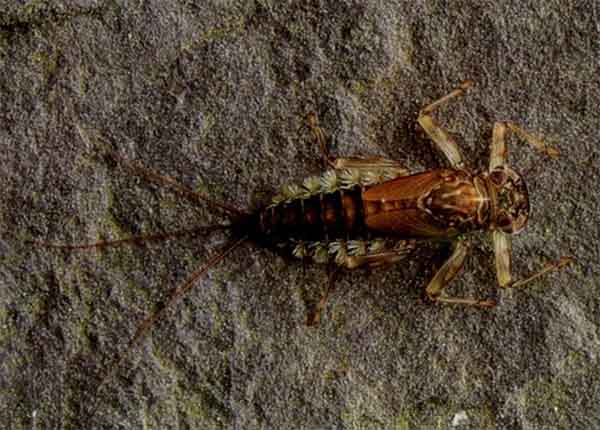
Nymph of the March Brown, Rhithrogena germanica
You will also see the scientific name of this genus written as Rithrogena rather than Rhithrogena, particularly in older books on angling entomology, but I have also seen Rithrogena used in scholarly research articles.
For centuries the March Drown dun has figured prominently in angling writing, but its distribution in Britain and Ireland is rather limited. This fly is rarely if ever seen on the majority of rivers and streams, and it does not appear on stillwaters except in the vicinity of incoming our outgoing rivers or streams.
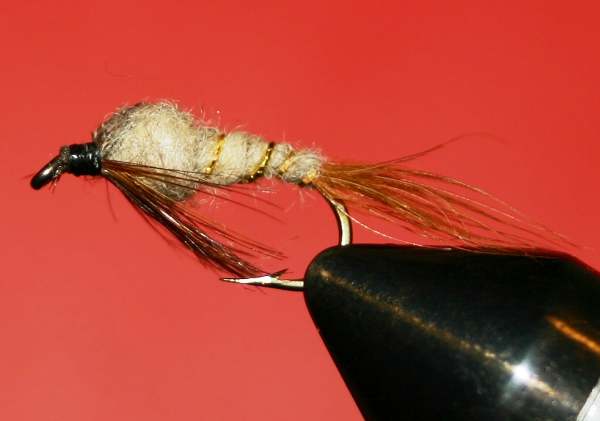
Gold-ribbed Hare's Ear Nymph (GRHE)
This is an insect of the fast-flowing northern and western rivers of England Wales and Scotland; it also occurs on some of the larger stony rivers in western Ireland.
The nymph is a stone clinger and not readily available to trout except during a hatch. March brown nymphs prefer the fast-flowing runs and glides, unlike the agile-darters which are usually found in greatest concentration near the margins or in weed beds.
In deeper water trout tend to take mainly the nymphs as they ascend and struggle through the surface film, whereas in shallow stretches they are often seen rising to the floating duns.
A size 12 Gold-ribbed Hare's Ear nymph, fished just below the surface, is a very effective general imitation when March Browns are hatching.
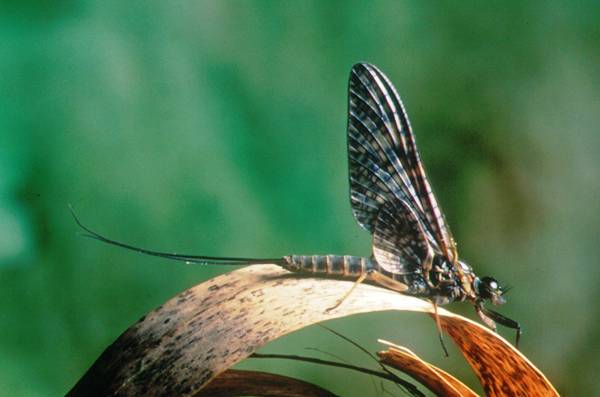
Female March Brown dun
Dun or subimago
In late March and early April the main hatches occur, often with duns coming off in waves spread over two or three hours. It is unusual for one of these bursts of activity to last much more than half an hour, and sometimes the main activity is concentrated into little more than ten minutes.
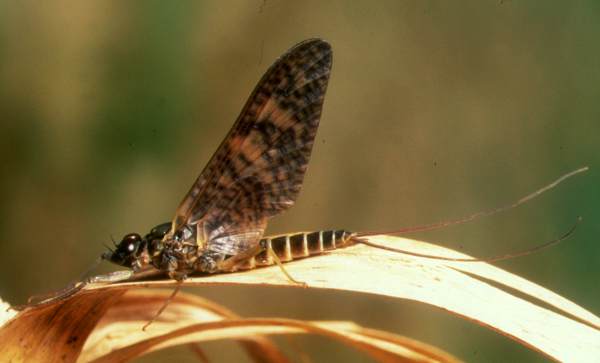
Male March Brown dun
Fishing tactics
In between flushes of surface activity it is sometimes possible to tempt a trout or two using a deeply-fished nymph such as a weighted Pheasant Tail Nymph.
Once the hatch is underway, a March Brown dry fly can be quite effective. Because the nymphs l;ive in fast-water stretches of the river, most of the duns will emerge in turbulent water where the trout get only a very distorted (and fleeting) view of flies on the surface. Don't worry too much about whether your fly is a close imitation of the March Brown: it's not crucial.
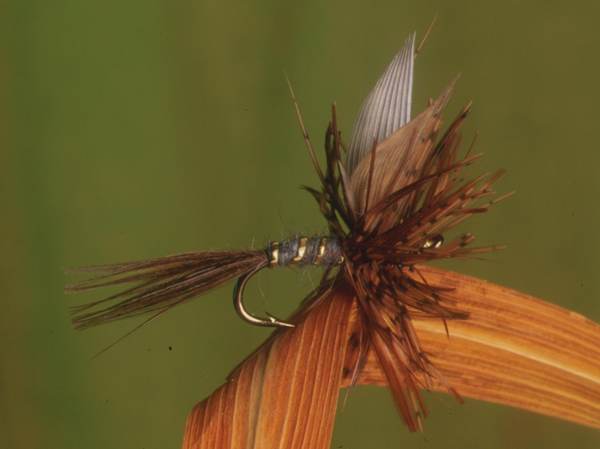
March Brown dry fly (devised by W H Lawrie)
Probably the only thing that you do need to get roughly right is the size. The March Brown is a large fly, and a size 12 hook is about right for your artificial flies.
I do also recommend that you try to get colour roughly right, because so often there is no direct sunlight in late March and early April, and so rather than appearing as a dark silhouette a fly on the surface is illuminated by diffused light bouncing from the riverbed; as a result, the colour of the fly is clearly visible when viewed from beneath the water. If trout are being at all choosy why give them an excuse for rejecting your fly if you can avoid it?
General March Brown imitations are tied with brown hackles and either buff or brown bodies and wings. If you haven't anything quite like this then try either a Pheasant-tail Spinner or a winged Greenwell's Glory - provided you have these in such an unusually large size.

Female March Brown spinner
Spinner or imago
It is not at all common to see large quantities of March Brown spinners during the day, as they generally lay their eggs during the hours of darkness and most of them have died before dawn. Occasionally, however, there are still a few spinners about in the first few hours of daylight, and then a size 12 Pheasant Tail Spinner is an artificial fly that will match the hatch adequately in the turbulent waters where March Brown occur.
Similar species
There are two common up-winged flies in Britain that could be mistaken for the March Brown. Ecdyonurus venosus, is sometimes referred to as the False March Brown, although more often it is given the common name Late March Brown because it appears from late April onwards. Hatches of the Large Brook Dun, Ecdyonurus torrentis, usually also begin in late April, and this fly is another March Brown look-alike.
Excited at the prospect of flyfishing? So are we, and we're pretty sure you would find the Winding River Mystery trilogy of action-packed thrillers gripping reading too. Dead Drift, Dead Cert, and Dead End are Pat O'Reilly's latest river-and-flyfishing based novels, and now they are available in ebook format. Full details on our website here...
Buy each book for just £4.96 on Amazon...
Please Help Us: If you have found this information interesting and useful, please consider helping to keep First Nature online by making a small donation towards the web hosting and internet costs.
Any donations over and above the essential running costs will help support the conservation work of Plantlife, the Rivers Trust and charitable botanic gardens - as do author royalties and publisher proceeds from books by Pat and Sue.
